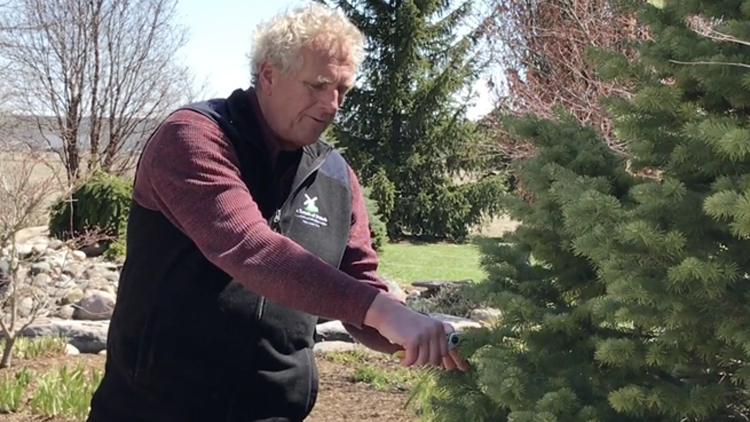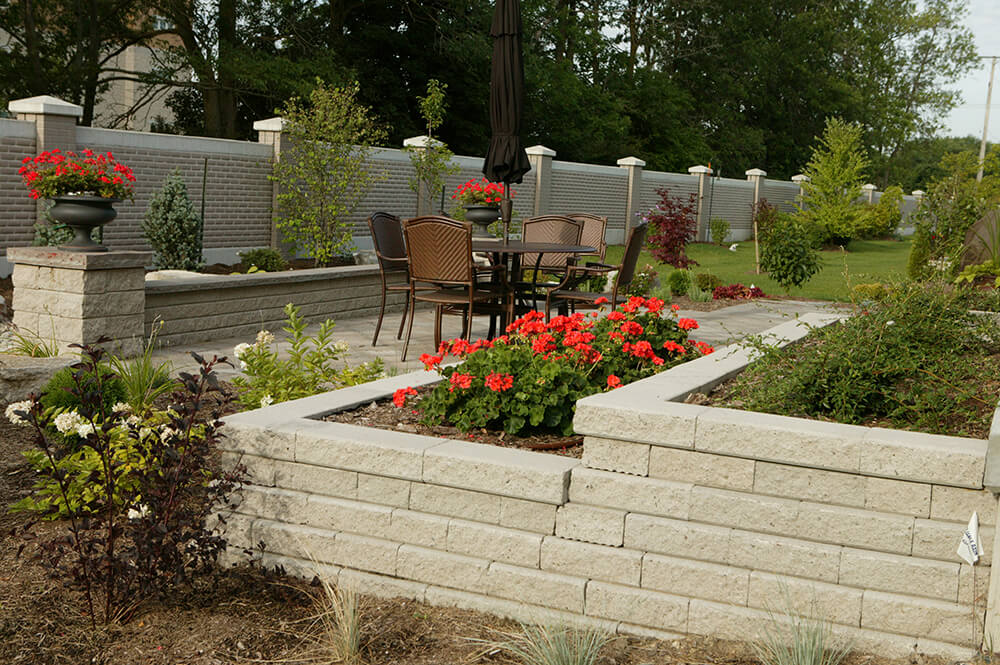
Precast and Natural Stone Retaining Walls
Retaining walls can enhance both the appearance and function of your lawn and garden.
Some DIYers may opt for wood when building a retaining wall. After all, timber and ties are easier to cut and install, and less expensive than stone options. Unfortunately, the benefits of a wood retaining wall are short-term.
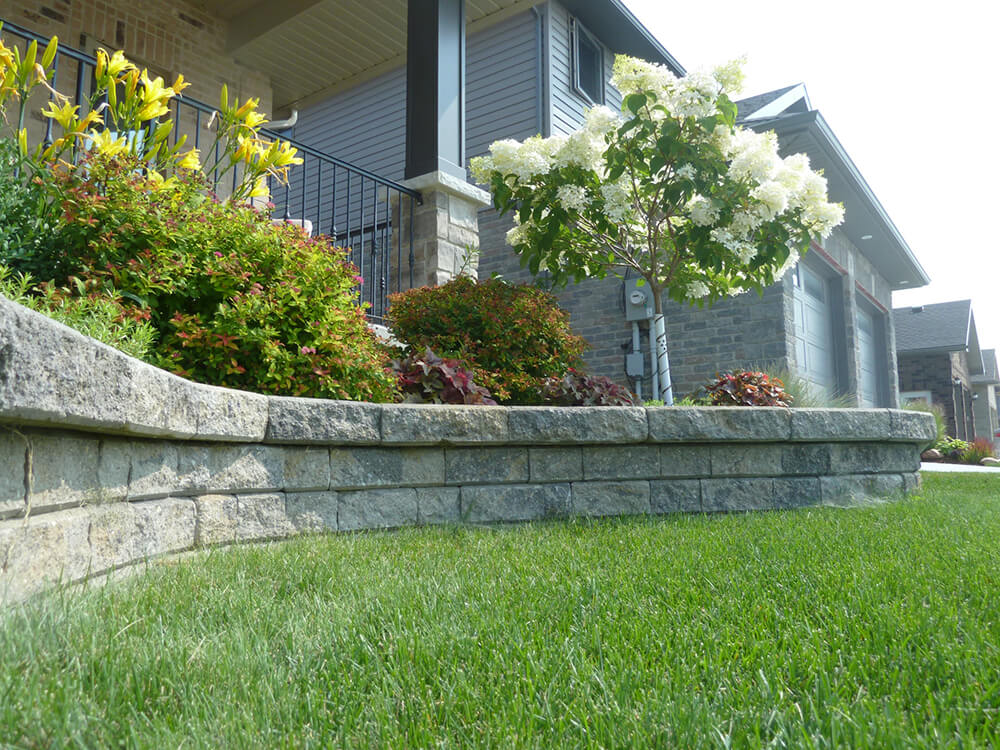 Even though it may look nice at the beginning, a wood retaining wall will begin to weather after a season or two, detracting from its appearance and effectiveness. The structure will need to be treated regularly. And even with treatment, the material may need to be replaced in as little as five years. Plus, the chemicals from pressure-treated lumber leach into the soil, which is not good in general, but especially for vegetable and herb gardens.
Even though it may look nice at the beginning, a wood retaining wall will begin to weather after a season or two, detracting from its appearance and effectiveness. The structure will need to be treated regularly. And even with treatment, the material may need to be replaced in as little as five years. Plus, the chemicals from pressure-treated lumber leach into the soil, which is not good in general, but especially for vegetable and herb gardens.
So, while retaining walls can be made from various materials, we recommend precast or natural stone for superior looks and durability.
Why Retaining Walls
There are a few key functional and aesthetic reasons that home and business owners opt to incorporate retaining walls into their landscape design.
If soil erosion – either away from or toward a house – is an issue, a retaining wall will help diminish run-off while discouraging water from pooling around and possibly damaging your home.
 If the slope of the lot in question renders the yard otherwise tough to landscape, one or a tiered series of retaining wall(s) can help create stepped gardens that are much more amenable to hosting plants, shrubs, and trees. Or a retaining wall can convert a sloping lawn into one single level for enhanced enjoyment of your greenspace.
If the slope of the lot in question renders the yard otherwise tough to landscape, one or a tiered series of retaining wall(s) can help create stepped gardens that are much more amenable to hosting plants, shrubs, and trees. Or a retaining wall can convert a sloping lawn into one single level for enhanced enjoyment of your greenspace.
If there is a big difference between the level of the lot and a building’s entrance level, tiered gardens housed in retaining walls eliminate the stark contrast and drastically improve curb appeal.
Of course, retaining walls can be used strictly to enhance the appearance and enjoyment of an outdoor area. They can help frame an elevated sitting area or add privacy to a sunken or grade-level patio.
A Few Considerations When Building a Retaining Wall
Permits
Depending on the size and location of your retaining wall, you may need to submit a plan to and get a permit from your municipal building department.
 Foundation
Foundation
Retaining walls need a solid foundation or base of compacted gravel that is added to a trench which is dug down to the clay level.
Construction
Retaining walls should be constructed with the appropriate stone, and using the right techniques to avoid premature deterioration or total collapse of the structure.
Backfill
The lower portion of the retaining wall’s contained area should be backfilled with drainage stone wrapped in filter cloth to prevent contamination between the soil and drainage stone. We recommend installing a drain tile so that excess water can easily drain from behind the wall.
The reason for this is two-fold. When soil gets wet, it expands and doesn’t drain well. Gravel and sand tend not to expand, minimizing the amount of lateral pressure that will be applied to a retaining wall. Gravel and sand also promote drainage, which will mitigate the risk of standing water. This is especially important if the area in question sits along a building’s foundation.
If you’re interested in adding one or more retaining walls to your landscape design, but the prospect of a DIY project seems a bit too much to handle, please contact us. We’re happy to work with you to create and install a design that makes your yard more attractive, more functional, and more enjoyable.






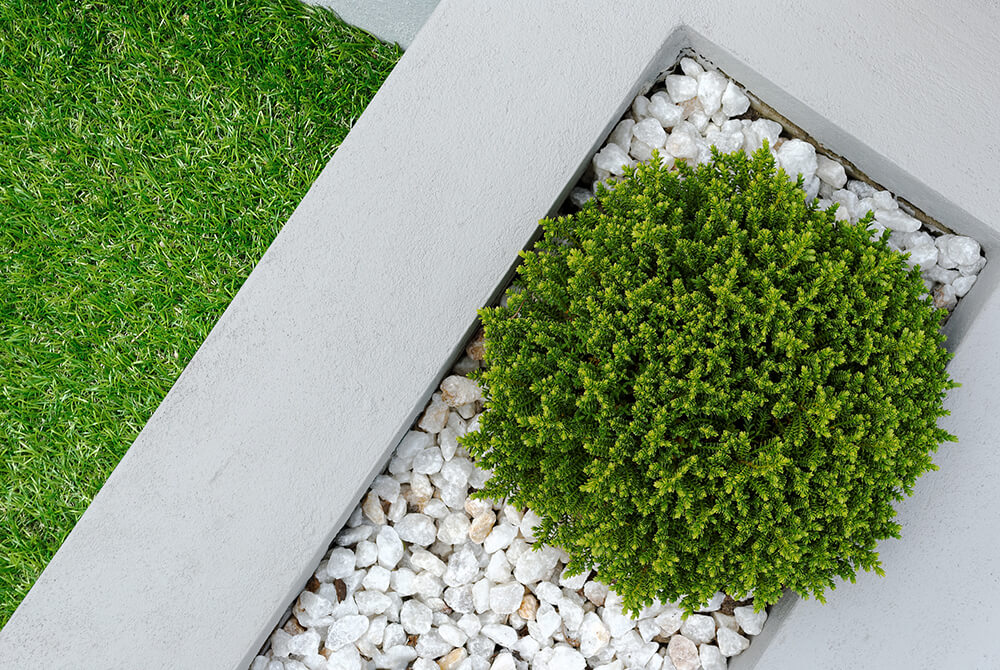
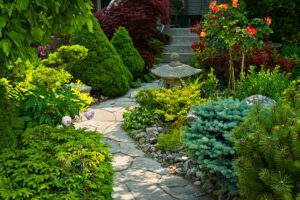
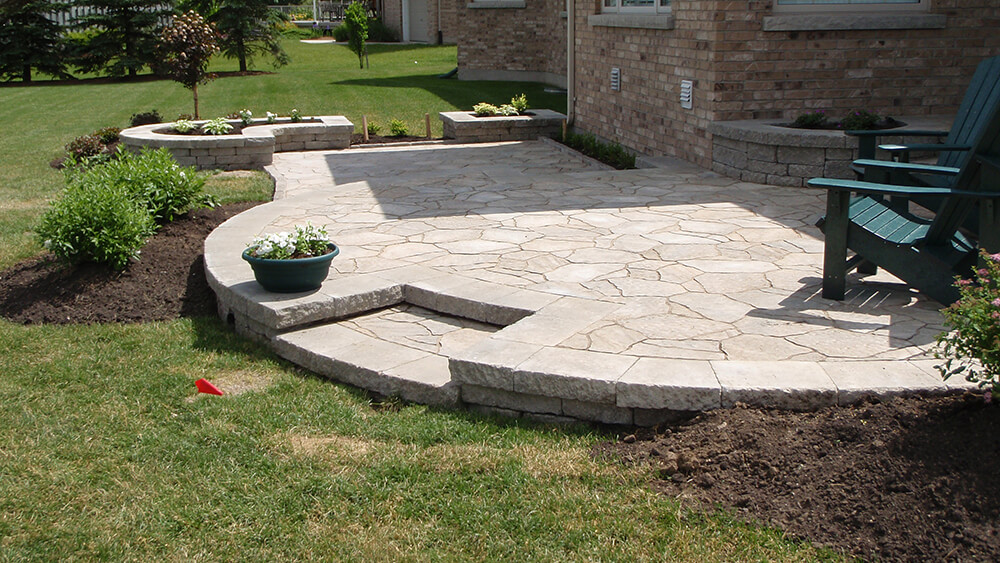
 COST
COST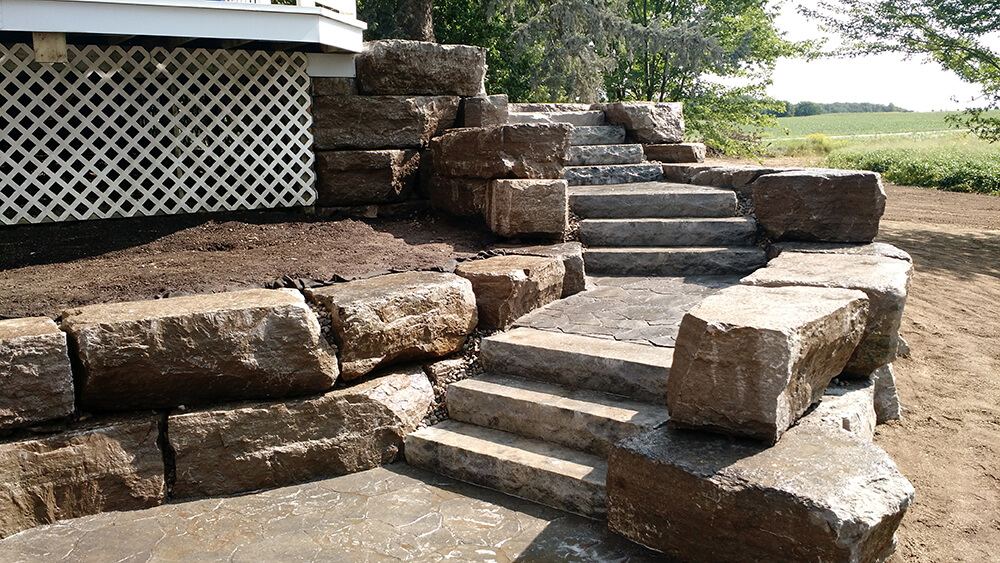 DURABILITY
DURABILITY PRACTICALITY
PRACTICALITY
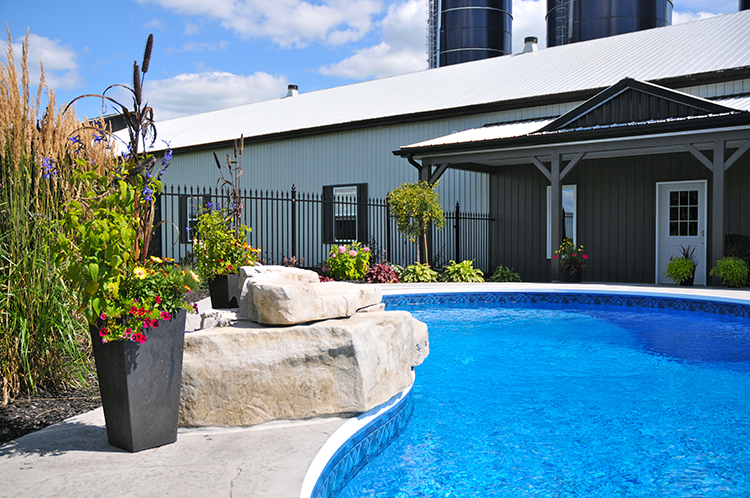 This is your invitation to have a big “blue sky” session. Include others who will also be using the finished space and note all wants and needs.
This is your invitation to have a big “blue sky” session. Include others who will also be using the finished space and note all wants and needs.  This step incorporates more practicality into your plan. Take some time to think about how you will be using your finished backyard. Talk to other pool owners about the things they love most about their yard and perhaps what they would have done differently if they could do it again.
This step incorporates more practicality into your plan. Take some time to think about how you will be using your finished backyard. Talk to other pool owners about the things they love most about their yard and perhaps what they would have done differently if they could do it again.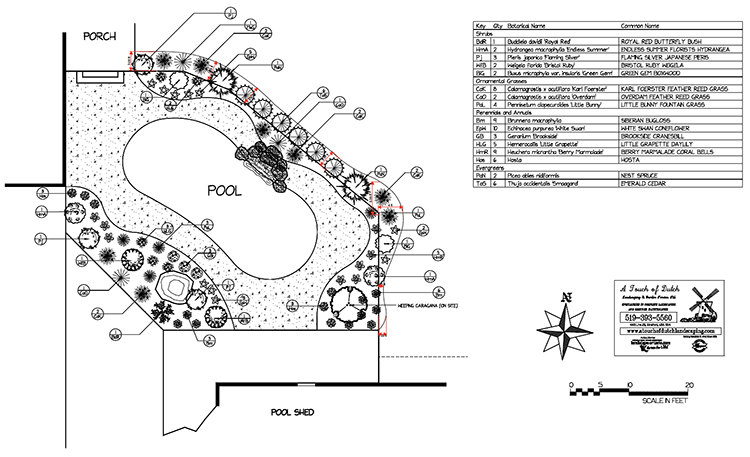 From modest to unlimited, we work with all kinds of budgets. And we’ll be happy to work within yours while showing you how to maximize the return on your investment without compromising your entire vision.
From modest to unlimited, we work with all kinds of budgets. And we’ll be happy to work within yours while showing you how to maximize the return on your investment without compromising your entire vision.
 If your home has a grass-dominant greenspace in front, keeping your lawn neat and tidy is a no brainer for improving and maintaining curb appeal. Keep grass cut to a consistent length, but not too short as doing so can cause undue stress and increased exposure to weeds and pests. Edging your lawn along walkways, gardens, and your driveway provide a nice, polished appearance as well.
If your home has a grass-dominant greenspace in front, keeping your lawn neat and tidy is a no brainer for improving and maintaining curb appeal. Keep grass cut to a consistent length, but not too short as doing so can cause undue stress and increased exposure to weeds and pests. Edging your lawn along walkways, gardens, and your driveway provide a nice, polished appearance as well.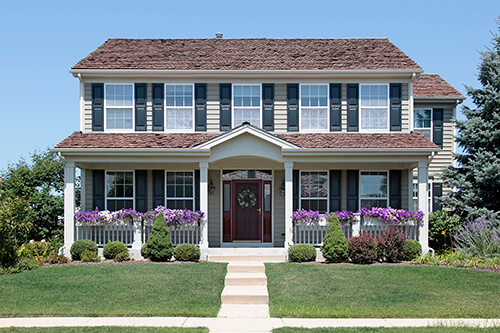 Fill in flat, exposed areas of your home’s exterior with shrubs, ornamental grasses, and small trees. This will add depth, balance, and visual interest to areas that were previously a blank canvas. Remember not to obstruct windows.
Fill in flat, exposed areas of your home’s exterior with shrubs, ornamental grasses, and small trees. This will add depth, balance, and visual interest to areas that were previously a blank canvas. Remember not to obstruct windows. Consider replacing your asphalt driveway with a professionally-installed stamped concrete or natural paver driveway. This area of your front yard is highly visible from the street and sidewalk, so making it visually interesting not only adds curb appeal but also distinguishes your home from others in your neighbourhood.
Consider replacing your asphalt driveway with a professionally-installed stamped concrete or natural paver driveway. This area of your front yard is highly visible from the street and sidewalk, so making it visually interesting not only adds curb appeal but also distinguishes your home from others in your neighbourhood.